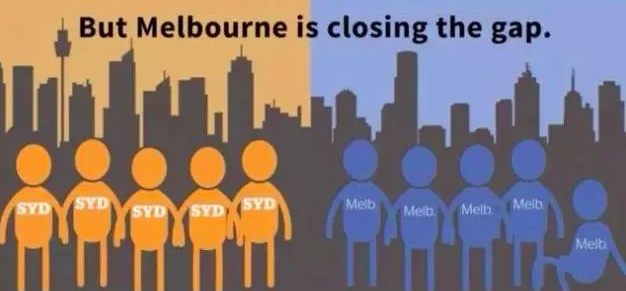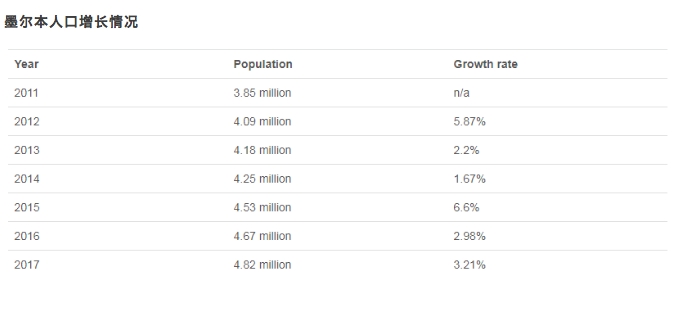Where did the Melbourne population catch up with Sydney?
In the past 12 months in July last year, the number of net immigrants in Australia increased by 245,400, representing the largest increase in 7 years!
Among Victoria’s states and territories, Victoria’s population has grown fastest with a total increase of 144,357, or 2.3%, followed by the Australian Capital Territory, with a population increase of 1.7%.
(Source: abs.gov.au)
At present, the most populous state in New York has 121,794 people, 79,580 in Queensland and 21,403 in Western Australia.
A spokesman for the Australian Bureau of Statistics, Bedear Cho, said that the Australian population is expected to reach 25 million by 2018, and “will continue to increase by one million every 2-3 years.”
By mid-2050, Melbourne is expected to become the most populous city in Australia! By then, the total number of Australians will reach 40 million! By the year 2100, the Australian population is expected to reach 53 million.
What kind of Melbourne has attracted so many residents because of the world-famous coffee? Artful street? Or is it because her stadium is always the most watched event in Australia and even the world?
Whatever the factors that have caused Melbourne’s attractiveness to be so great, inter-state migration patterns are one of the most important reasons for the rapid population growth in Melbourne. More Australian residents chose Melbourne and left Sydney. The difference in population growth between the two cities has reached 20,000 people a year since 2001.
For Melbourne, going beyond a larger city like Sydney is a slow process. Larger cities have higher natural growth rates, and their larger economies tend to attract more overseas immigrants and tourists who come to work. Even so, Melbourne expects to surpass Sydney between 2030 and 2050.
Melbourne’s population growth
Sydney’s population growth
In fact, both cities have considerable growth rates. There are more similarities than differences. A major driver of economic growth is the service industry, especially large-scale knowledge-intensive services such as professional services (accounting, legal, engineering, architecture and computer system design, etc.) and the health and education sectors. In Sydney and Melbourne, the large number of professional and technical professions has become very difficult to solve within the city. The health sector reflects a similar trend. Melbourne and Sydney have demonstrated increasingly specialized and centralized services.
However, in these industries, Melbourne’s growth rate has exceeded Sydney’s, making the number of job opportunities offered by the two cities almost the same.
Although the number of people employed in the service industry has grown, there are also negative news. Although the focus of the media is on the demise of the Victorian automobile industry, New South Wales’ manufacturing jobs have fallen more than Victoria.


In the past decade, Australia has experienced an unprecedented wave of immigration. In absolute terms, it is even higher than the net ingested population in the post-war United Kingdom and Europe and the highest immigration peak in 1988-89. These high percentages of migrant workers have settled in Melbourne and Sydney, but these new immigrants have shown different characteristics compared to low-skilled, non-English speaking immigrant groups.
In the 21st century, a large proportion of immigrants are well-educated and can reach a certain level of English. This reflects both the increase in the proportion of skilled immigrants and the success of Australian higher education. The largest category of immigration professionals is professionals (27%) The second largest category is technical and professional (14%). The source of immigrant population is up to China, India and the United Kingdom. More than half of Indian skilled immigrants work in the field of information and communications technology. About 40% of Chinese immigrants work in accounting.
These immigrants are in an excellent position. They seized the opportunity to take advantage of the rapid growth of professional services (accounting or computer system design), merged Asia’s leading development skills, and graduated from Australia’s tertiary institutions. The combination of personnel knowledge and background creates a diversity of growth for Australia’s professional services.



Geographically, the largest population growth has occurred in Sydney and Melbourne’s inner city. From 2001 to 2011, residential housing prices in the urban center area soared. The growth of residential prices in Southbank and Dockland is obvious to all. The rising office building in Southbank also changed Melbourne from a riverside city into a city. A center that spans rivers, draws diversification and sports.

Leaver a comment